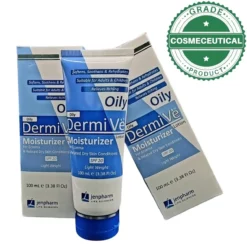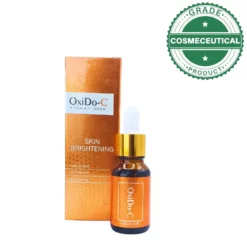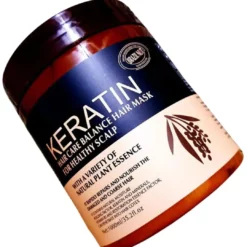-
×
 Best Cleanser for Oily Skin - Metafil OS 100ml - Gentle & Effective
₨ 1,150
Best Cleanser for Oily Skin - Metafil OS 100ml - Gentle & Effective
₨ 1,150 -
×
 Precision Diode Laser Hair Removal: Half Legs till Knees - Derma & Dental Clinic
₨ 20,000
Precision Diode Laser Hair Removal: Half Legs till Knees - Derma & Dental Clinic
₨ 20,000 -
×
 ACNE WIPE ANTI ACNE MILKY CLEASNER 100ml
₨ 1,700
ACNE WIPE ANTI ACNE MILKY CLEASNER 100ml
₨ 1,700 -
×
 DERMIVE OILY MOISTURIZER LOTION (FOR ECZEMA AND RELATED DRY SKIN CONDITIONS SPF 20) 100ml
₨ 998
DERMIVE OILY MOISTURIZER LOTION (FOR ECZEMA AND RELATED DRY SKIN CONDITIONS SPF 20) 100ml
₨ 998 -
×
 Scalp Rejuvenation with Platelet-Rich Plasma (PRP) Therapy: Derma & Dental Clinic Lahore
₨ 15,000
Scalp Rejuvenation with Platelet-Rich Plasma (PRP) Therapy: Derma & Dental Clinic Lahore
₨ 15,000 -
×
 KETONAZ LOTION SHAMPOO BASED 60ml
₨ 750
KETONAZ LOTION SHAMPOO BASED 60ml
₨ 750 -
×
 Night Cream Whitening | Motate Whitening Night Cream 50g
₨ 2,190
Night Cream Whitening | Motate Whitening Night Cream 50g
₨ 2,190 -
×
 Safriderm Cream: Advanced Antioxidant Skin Brightening Solution 30ml
₨ 1,200
Safriderm Cream: Advanced Antioxidant Skin Brightening Solution 30ml
₨ 1,200 -
×
 Serum for Skin Whitening - Brighten & Even Skin Tone - derma.pk
₨ 3,500
Serum for Skin Whitening - Brighten & Even Skin Tone - derma.pk
₨ 3,500 -
×
 PASTEL NAIL POLISH 112 13ml
₨ 1,088
PASTEL NAIL POLISH 112 13ml
₨ 1,088 -
×
 HYDROPHIL MOISTURIZING LOTION (UREA BP 5% W/V) 120ml
₨ 308
HYDROPHIL MOISTURIZING LOTION (UREA BP 5% W/V) 120ml
₨ 308 -
×
 OXIDO-C VITAMIN C SERUM FOR SKIN BRIGHTENING 15ml
₨ 1,500
OXIDO-C VITAMIN C SERUM FOR SKIN BRIGHTENING 15ml
₨ 1,500 -
×
 SUNKISSES ANTONYM: BAKED BRONZER & HIGHLIGHTER DUO15g
₨ 6,595
SUNKISSES ANTONYM: BAKED BRONZER & HIGHLIGHTER DUO15g
₨ 6,595 -
×
 BRAZILIAN NUTRIENT HAIR MASK FOR SCALP BALANCE AND KERATIN CARE 1000ml
₨ 7,960
BRAZILIAN NUTRIENT HAIR MASK FOR SCALP BALANCE AND KERATIN CARE 1000ml
₨ 7,960 -
×
 E.L.F MATTE LIPSTICK IN FUCHSIA 1.4g
₨ 2,864
E.L.F MATTE LIPSTICK IN FUCHSIA 1.4g
₨ 2,864
You may be interested in…
-
Add
 Seravio SERUMS NZ with Niacinamide 10% & Zinc 1% - Pore Minimizing & Brightening Serum (30ml) | ATCO Life Sciences
Rated 4.33 out of 5(9) ₨ 1,817
Seravio SERUMS NZ with Niacinamide 10% & Zinc 1% - Pore Minimizing & Brightening Serum (30ml) | ATCO Life Sciences
Rated 4.33 out of 5(9) ₨ 1,817 -
Add
 YUTH Face Wash for Acne & Oily Skin - Clears Pimples, Soothes Inflammation | Medizone Pharmaceuticals | 100g
Rated 4.60 out of 5(10) ₨ 695
YUTH Face Wash for Acne & Oily Skin - Clears Pimples, Soothes Inflammation | Medizone Pharmaceuticals | 100g
Rated 4.60 out of 5(10) ₨ 695 -
Add
 Pillus Hair Spray 60ml | Anti Hair Fall Spray with Provitamin B5, Vitamin B6, Zinc & Elastin | derma.pk
Rated 4.64 out of 5(11) ₨ 700
Pillus Hair Spray 60ml | Anti Hair Fall Spray with Provitamin B5, Vitamin B6, Zinc & Elastin | derma.pk
Rated 4.64 out of 5(11) ₨ 700 -
Add
 FLORAL FACE WASH FOR REJUVENATE & ADORN SKIN 50ml
Rated 4.83 out of 5(12) ₨ 650
FLORAL FACE WASH FOR REJUVENATE & ADORN SKIN 50ml
Rated 4.83 out of 5(12) ₨ 650 -
Add
 Clean & Clear Face Wash | Oil-Free Daily Cleanser for Clear Skin
Rated 4.75 out of 5(16) ₨ 545
Clean & Clear Face Wash | Oil-Free Daily Cleanser for Clear Skin
Rated 4.75 out of 5(16) ₨ 545







